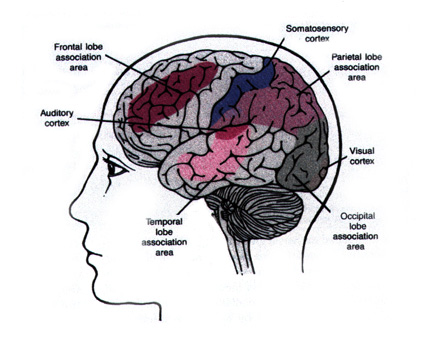|
Teaching For The Multiple Intelligences Program Slide 4 |
|
|
Views and Functions of the Brain |
|
|
From the publication |
|

|
|
|
Association Cortex and Perceptual Processing The cortical association areas are brain areas that lie outside the primary cortical sensory or motor areas but are connected to them. The association areas are not considered part of the sensory pathways but rather play a role in the progressively more complex analysis of incoming information. They also serve integrative functions and are implicated in many forms of behavior. The more central regions of association cortex receive information only after it has undergone initial processing by the association region closest to the primary receiving area. Some of the neurons in these central regions receive input concerning two or even three of the different types of sensory stimuli. These regions of association cortex are assumed to serve more complex functions. Thus, a neuron receiving input from both the visual cortex and the “neck” region of the somatosensory cortex might be concerned with integrating visual information with sensory information about head position so that, for example, a tree is understood to be vertical even though the viewer’s head is tipped sideways. Fibers from neurons of the posterior parietal lobe go to association areas in the frontal lobes that are part of the limbic system. Through these connections sensory information can be invested with emotional and motivational significance. Further perceptual processing involves not only arousal, attention, learning, memory, language, and emotions but also comparing the information presented via one type of sensation with that of another. For example, we may hear a growling dog, but our perception of the event varies markedly, depending upon whether our visual system detects that the sound source is an angry animal or a loudspeaker. |
|
|
Go to Slide # 1 — 2 — 3 — 4 — 5 — 6 — 7 — 8 — 9 — 10 11 — 12 — 13 — 14 — 15 — 16 — 17 18 — 19 — 20 — 21 |